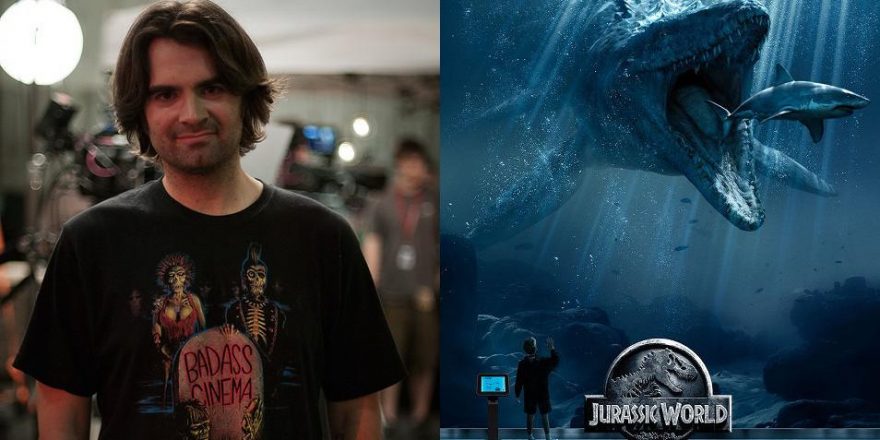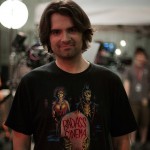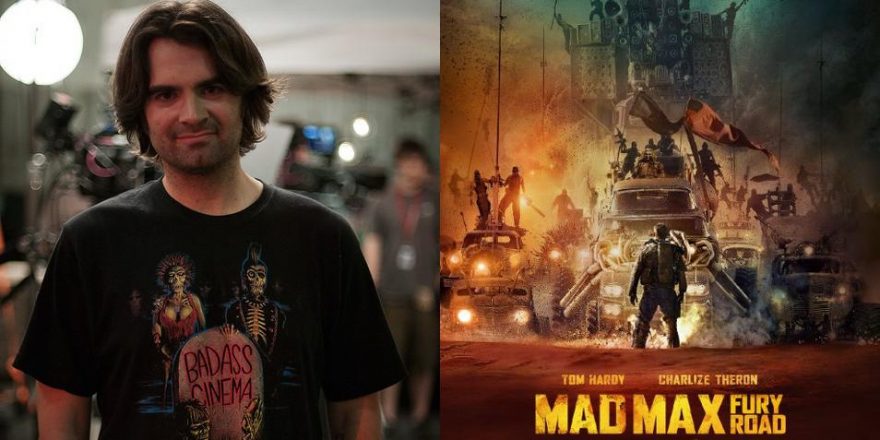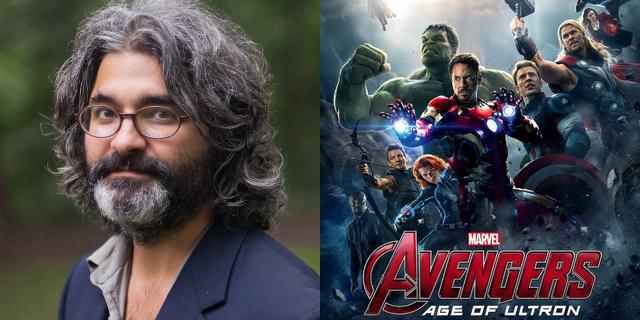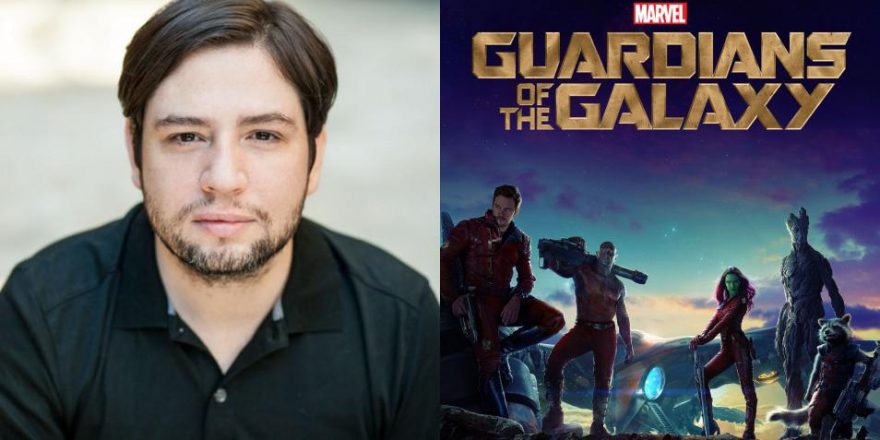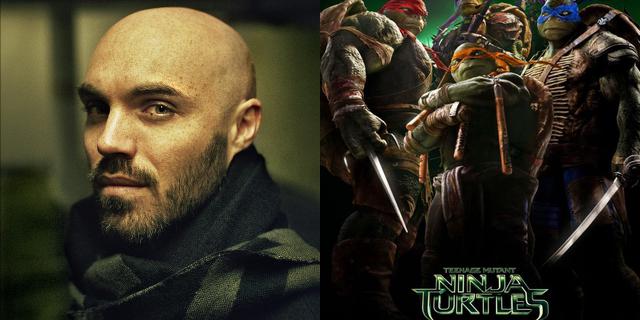WARNING: Spoilers abound.
When you’re a kid, even a young adult, being able to lose yourself in a movie — before the curtain is pulled aside to reveal the process, before the responsibilities of life dilute some of the magic — is always so simple. You simply accept whatever Hollywood conjures up, enjoying a galaxy far, far away and believing a boy taking flight (I was a big fan of The Boy Who Could Fly back then), and don’t try to pick apart how the filmmakers aim to fool the viewer into believing that, I dunno, DINOSAURS could walk amongst us today. As we grow older, knowledge about our surroundings begins to supersede the magic of imagination, real life steps in, and we acknowledge these things are not true.
Or, alternatively, we take a different path. We hold up the moments in our movie-watching lives that grab us by the throat (or gently seduce us), choking the outside world out and making us forget there is a distance between the viewer and the cinematic landscape. We become determined to peek behind the curtain and break down how the filmmakers did it, but we also just let go and fall into the story, the characters, the spectacle in those moments of movie magic.
One such moment for me was on Thursday, June 10th, 1993, and it has never quite left me. That night my then girlfriend, her sister and I went to go see the very first showing of Jurassic Park. Fueled by Crystal Pepsi – the drink of the moment “Right Now” — and blasting Radiohead’s “Creep,” we went into Jurassic Park with little expectation other than “Spielberg + Dinosaurs + Theme Park = Jaws on Land.” Spielberg had just come off the mega-budget bust Hook, so this was a smart follow-up, a Michael Crichton potboiler concept that felt tailor-made for him. I hadn’t read the book, but had glimpsed shots of these newfangled CGI dinos in Starlog and Fangoria (pre-Internet days, ah…) and, being a huge practical FX nerd, had more faith that Stan Winston (T2, Aliens, et al.) was going to wow me with huge rubber creatures than some pixels would.
I was unaware of what was coming, and that element of surprise made the rain-soaked T. rex scene one of the most memorable sequences I’ve ever seen in a movie theater; I’ve been chasing that feeling as an audience member – and subsequently as a filmmaker – ever since. The dark tones, the pulsating rain, the lack of music, the stark pacing, the kids-in-peril trope and, finally, the subtle reveal of this mega-monster we’ve only dreamed of seeing like this on the Silver Screen. I remember the first wide shot of the T. rex walking between the two Jurassic Park Ford Explorers and how the packed audience in that theater in Coram, Long Island just held its breath. We all believed. And we collectively kept holding our breath until Donald, the unfortunate lawyer (Martin Ferrero), in a moment that combined both horror and cathartic comedy, was relegated to snack food when the creature chomped down on him, thrashing him about as he sat on the toilet. The entire audience screamed, jumped, freaked out, so much so that it took a good five minutes for us to all recover. I had to go to see it again the very next day to enjoy the remainder of the sequence, and took as many friends as I could just so I could watch them freak out too.
In that moment, my keen FX-based sensibilities — honed by copious research on such giants of the field as Winston, Rick Baker, KNB, Tom Savini and Rob Bottin — floated away. Any impulse to figure out “how did they do that?!” left my brain, as did menial tasks I had to accomplish the next day or if I was gonna get a kiss at the end of the night. Poof. Why? BECAUSE THERE REALLY WAS A T. REX EATING THAT DUDE!!! The seamless blend of old and new filmmaking technologies created something unique, an alchemy that has seldom been replicated or topped. I completely forgot about everything else but this scene, and it truly was a magical, communal moment, one of the few moments when I forgot I was watching a movie and my “Inner Child” took over, reminding me what it’s like to believe.
Since then I’ve seen thousands of movies of varying genres and qualities. Yet in the back of my brain, I’m always hoping and praying that I’ll get another chance to forget the real world and be part of a cinematic world unfolding before me. There have been two Jurassic Park sequels over the past 20 years, but both The Lost World and Jurassic Park III were mired in same-ness, unfortunately lacking in Spielbergian charm and danger, and failed to create further moments of magic.
The entire audience screamed, jumped, freaked out, so much so that it took a good five minutes for us to all recover.Now with the release of the Spielberg-produced, Colin Trevorrow-directed Jurassic World, a collective nostalgia was evidenced by the massive, record-breaking box office this past weekend. Adults who saw the original in theaters were looking for a fix of the “good ol’ days.” We wanted the lights to go down, the popcorn to be warm, and for the moviemaker gangs to remind us what it’s like to be that kid once more, without the bills and bullshit. We wanted to believe.
In a moment of déjà vu, I found myself again in a darkened theater, the first Thursday show before release, warm popcorn in hand, ready to embrace that moment. As the movie unfolded, my filmmaker brain immediately began to analyze every shot, every choice. The film doesn’t have that familiar Spielbergian framing and pacing, usually complemented by the John Williams score, but Trevorrow isn’t trying to outdo the master. Instead, he’s presenting an alternate reality where, undeterred by the events of the previous two sequels, Big Business has stepped in to make John Hammond’s dream a reality (albeit with a CityWalk-like promenade and a Margaritaville restaurant mixed in with the prehistoric attractions). Jurassic World somehow makes us forget those two sequels even existed (not hard, actually), which is interesting considering that lately it’s easier to reboot a franchise than it is to pick up the pieces from previous films. The aim here is to entrance a jaded world fixated by their phones, to get people to look up and remember that child-like glee when they discovered monsters roamed the Earth back in the day.
Trevorrow capably juggles different arcs and emotions, and while I might not be the popular kid in the class with this sentiment, I connected most to the two brothers (played by Ty Simpkins and Nick Robinson) who were seeing Jurassic World with wider eyes than the rest of our heroes, and felt true concern with their well-being. Maybe it’s because since 1993 and the first time I virtually set foot on Isla Nublar, I’ve had two boys myself, and these two moppets gave me a glimpse into my kids’ future. (Hopefully not the dino-peril stuff, but you get my drift.) I found myself rooting for these boys, who didn’t seem jaded yet from the world of divorces (like their parents) or workloads (like their aunt). They were into their music and their phones and their imaginations — the perfect innocent victims! When their sphere is attacked by the Indominus rex, I found myself inching closer to the screen, wondering what would happen next.
And yet, something still was off. I didn’t feel that same sense of danger that Jurassic Park had. Everything felt safe, low-stakes.
But then the third act kicked in: the park’s main creature hub is breached by a helicopter crash, unleashing a flock of Pteranodons and other species onto an unassuming consumerist mass of attendees. It’s here where I felt the old Spielberg feeling, that devilish danger that somehow the auteur pulled off in the early ’80s when he could get away with ripping out hearts, spawning little creatures who did kill people, and having someone tear his own face off in a PG movie. When the dinos descend on Jurassic World’s promenade, the way the attack was filmed and staged actually gave me the feeling that anyone in the scene could be plucked up and killed, even the boys. However, it’s Zara (Katie McGrath), the thinly drawn assistant assigned to look after the boys, who is picked off instead. Usually we get the rush when one T. rex rips a body in two, or two T. rexes share a meal, but that’s a quick moment of sick thrills. Here instead, in one of the most graphically sadistic kill scenes in any of the Jurassic Park movies, the poor assistant is passed around amongst the attacking species in such a way as to almost tell the audience that she deserves it (which to me she didn’t, unless professional passivity or minor neglect is a fate punishable by gruesome death). She is killed in such a way that the film feels dangerous. Hell, no one is safe. My heart rate began to quicken. I lost focus on analyzing the cinematic process and my Inner Child began to take hold.
And then it happened. When I least expected it, a shot unfolds where most of our surviving heroes – Chris Pratt, Bryce Dallas Howard and the boys – narrowly escape being collateral damage wrought by the climactic face-off between the Indominus rex, the velociraptor Blue and the friendly raptors – and the late-to-the-party T. rex from the first Jurassic Park, which is, let’s face it, all we really wanted to see from this movie. It’s a dino Battle Royale that emulates the great T. rex/Kong fight in the original King Kong. Bring it on! Set at night, with destruction and rubble all around, the sequence is staged by Trevorrow as one long take, which is not uncommon in the age of previsualization and set pieces constructed entirely with CGI. However, as the shot continues and the fight escalates amongst the species, I forgot about the humans in peril and, at least for a moment, I felt like I was that kid with two handfuls of dinosaur toys, mashing them together with destructive glee. I forgot the process, and the Inner Child took over fully.
Now, why did this work when previous installments (and many other imitators) have failed? It’s in part due to the basics of movie manipulation through simple yet effective tools. Using scale and a low, sweeping, wide-framed angle, we immediately see how the humans caught in the chaos are minuscule compared to the main event’s competitors, that Pratt and company could easily be turned into gum on the bottom of one of the dinos’ feet in the middle of this fracas.
But the coup de grace is all about our expectation. Spielberg is a master of this, taking the conventional wisdom of moviemaking and turning it on its head, knowing what we think we’re going to see and steering it in a direction we didn’t see coming. In the first Jurassic Park, it was the T. rex first looking at the lawyer for a beat, almost docile, before chomping down on his snack all within the same shot, lifting the legal eagle off the porcelain throne and waving his body in the air like a dog’s chew toy. In Jurassic World, the choice to make the final battle mostly a one-take shot might have seemed bombastic and almost Birdman-esque upon first glance, but it’s all a setup for the final beat of the shot…when the Indominus is ambushed Deep Blue Sea-style by the gigantic Mosasaurus which we only fleetingly saw in the first act (when it snapped its mile-long jawline around a poor, defenseless Great White Shark, one of the film’s many meta hat-tips). When this moment unfolded, the audience I was with screamed, jumped, freaked out. Just like they did in 1993. And it was at that moment I was shaking hands with my Inner Child again, soaking in the scene and letting it work its magic on me.
It was then that I remembered once again what it was like to be a kid, to forget my troubles and let the movies take me away, to be shown a safe danger we can be scared by and laugh off in comfort. For all the issues people may have with Jurassic World, few would dispute the effect the moment described above has on even the most jaded of viewer. It was executed in a manner that delivered exactly what I wanted. I believed.
When that internal kid reacts to anything, not just on the silver screen but in life, we need to embrace and cherish it. These moments become more fleeting as I traverse through life, but when they come, I never ignore them. I walked out of Jurassic World with the same shit-eating grin I did when I was a young teen, ready to take on the world with little perspective of what was ahead of me.
Lately, I’ve started to watch films through my kids’ eyes, getting a vicarious thrill as I see them respond for the first time to movie moments I loved when I was young and inevitably don’t enjoy in quite the same way now. It’s hard to tap into that innocence much anymore, but I’m going to cherish every time they stare in Spielbergian wonder at the screen as something new, wonderful, scary and exciting unfolds. And I can’t wait for them to see that lawyer get eaten on the toilet and, now, when the Indominus gets his. Sadly, Crystal Pepsi will likely not be involved.


